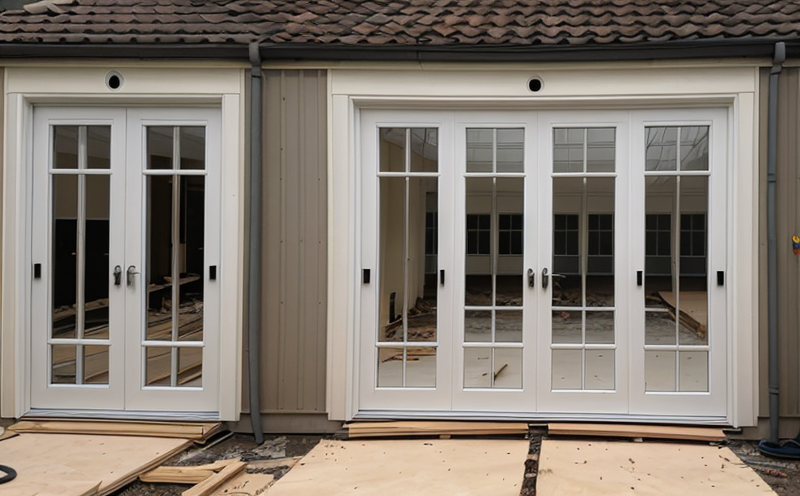EN 1634-2 Fire Resistance Testing of Windows
The EN 1634-2 standard is a European standard that specifies the procedure for conducting fire resistance tests on windows, doors, and partitions. This particular test focuses on determining the time at which a window can sustain fire exposure without compromising its integrity, stability, or insulation properties.
Fire resistance testing of windows is critical in ensuring compliance with building regulations and safety standards. It evaluates how effectively a window can withstand fire and maintain its structural integrity during a fire event. The test involves placing the specimen in a furnace where it is exposed to controlled heat for a specified duration, followed by an evaluation phase.
The testing procedure typically begins with careful preparation of the specimens. This includes ensuring that all components are correctly assembled according to the manufacturer’s specifications. Once prepared, the windows are placed into a furnace and subjected to increasing temperatures over time. The temperature ramping rate is carefully controlled to simulate real-world fire conditions accurately.
The test requires precise instrumentation to monitor critical parameters such as heat flux, temperature distribution across the specimen, and the integrity of the window after exposure. After the prescribed period, the window undergoes a series of inspections and measurements. These include checking for structural damage, loss of insulation properties, or breaches in stability.
The results of these tests are reported comprehensively to provide stakeholders with detailed information about the fire resistance performance of the windows tested. Compliance with this standard ensures that buildings meet essential safety requirements, enhancing overall fire safety and reducing potential risks associated with inadequate window performance during a fire event.
- Comprehensive furnace exposure
- Thermal insulation measurement
- Structural integrity evaluation
- Thermal stability assessment
By adhering to the EN 1634-2 standard, manufacturers and installers can ensure that their windows meet stringent fire safety requirements. This not only enhances public confidence but also helps in achieving compliance with local building codes.
Eurolab Advantages
At Eurolab, we pride ourselves on delivering top-tier testing services, and our EN 1634-2 fire resistance testing for windows is no exception. Our team of experts ensures that every test adheres to the highest standards, providing accurate and reliable results.
- Experienced Personnel: Our staff are highly trained professionals with extensive experience in conducting various types of fire tests. This expertise guarantees precise and consistent outcomes.
- State-of-the-Art Facilities: We have cutting-edge testing equipment that meets all international standards, ensuring accurate data collection during the test process.
- Prompt Reporting: Our team works diligently to provide timely reports, offering a detailed analysis of each window's performance under fire conditions.
- Compliance Assurance: Eurolab stays current with all relevant regulations and standards, ensuring that our tests meet the latest requirements for safety and efficacy.
Choose Eurolab for your EN 1634-2 fire resistance testing needs. Trust in our commitment to quality and excellence, delivering accurate results tailored to your specific requirements.
Why Choose This Test
- Regulatory Compliance: Ensures that windows meet stringent European standards for fire safety.
- Enhanced Safety: Provides critical data on the performance of windows under fire conditions, enhancing building safety.
- Quality Assurance: Offers comprehensive testing to ensure product quality and reliability.
- Client Satisfaction: Delivers accurate test results that can be used for marketing or compliance purposes.
The EN 1634-2 fire resistance test is essential for manufacturers, installers, and property developers. It not only ensures compliance with regulatory standards but also provides valuable data on the performance of windows under real-world fire conditions.





